[Modern Art Series] Expressionism – Chapter 5

In the late 19th and early 20th century, France was regarded as "THE" place for new innovative art.
Not because the French had anything different with their sentiment on art, by mostly because almost all artists immigrated to France and Paris in order to launch their careers. Paris attracted new art much like how Hollywood and Silicon Valley attracts new talent today.
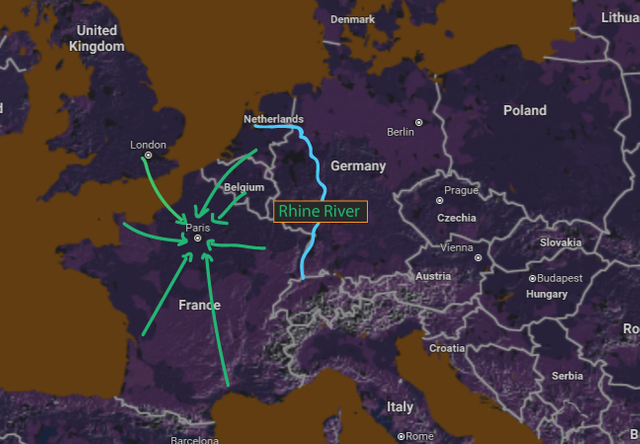
However, accross the Rhine river, Germany started to see new artists emerge. Expressionism was this new cultural movement in the early twentieth century that differentiated itself with French Art.
Far from modern or European art, the first source of the Expressionist movement was the Middle Ages and tribal art. The Expressionists sometimes called it "Primitive" art.
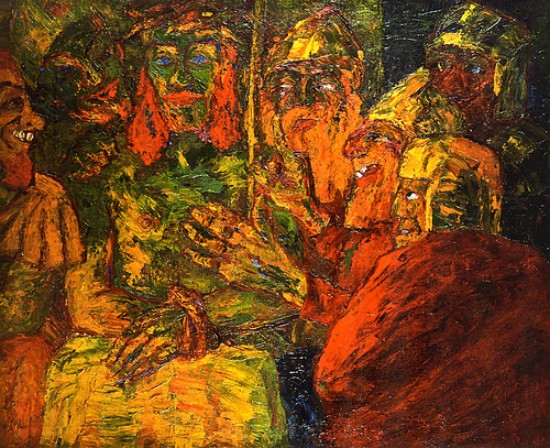
Emil Nolde, The Mocking of Christ, 1909. Oil on canvas, 86 x 106.5 cm.
The second source of influence for Expressionist artists had little to do with visual art at all; it was rooted in the philosophy of Friedrich Nietzsche.
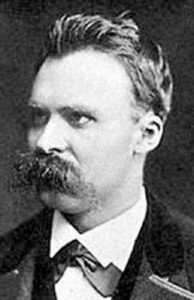
Friedrich Nietzsche Portrait
So in some ways, the Expressionists were "rediscovering" the Medieval and Gothic while at the same time they searched what they imagined to be pure, authentic art. A sort of 'primitivist project'.
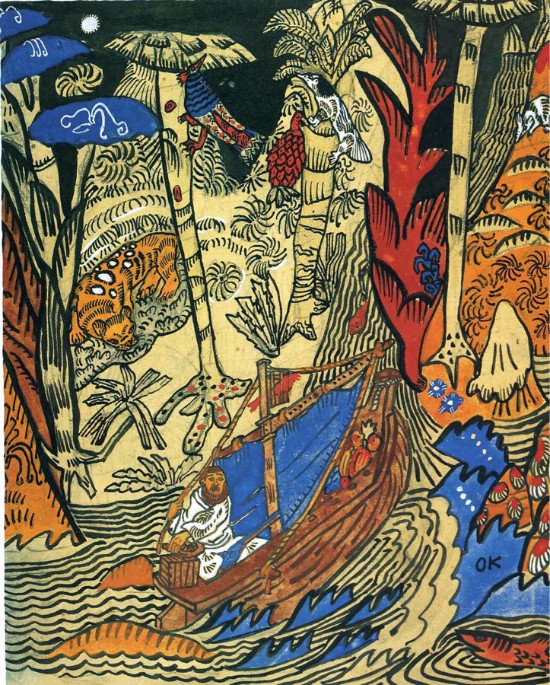
Oskar Kokoschka, Robinson, 1908. Oil on canvas, 90 x 126 cm.
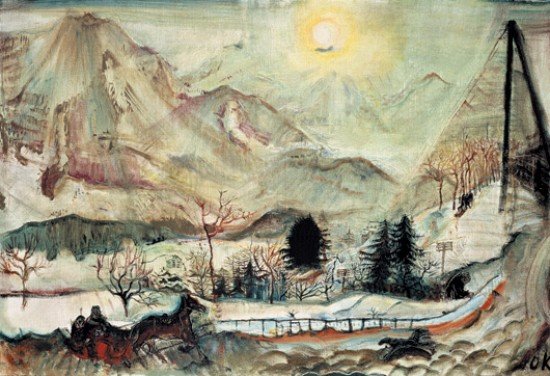
Oskar Kokoschka, Dents du Midi, 1909-1910. Oil on canvas, 80 x 116 cm.
One of the most important pre-war Expressionist group was Die Brücke (The Bridge). Their name refers to a passage from Friedrich Nietzsche philosophical novel "Also Sprach Zarathustra" (Thus Spoke Zarathustra):
Man is a rope, stretched between the animal and the Superman ; a rope over an abyss.
What is great in man is that he is a bridge and not a goal; what can be loved in man is that he is a "going-across" (transitioning) and a "going-down" (perishing).
– Friedrich Nietzsche
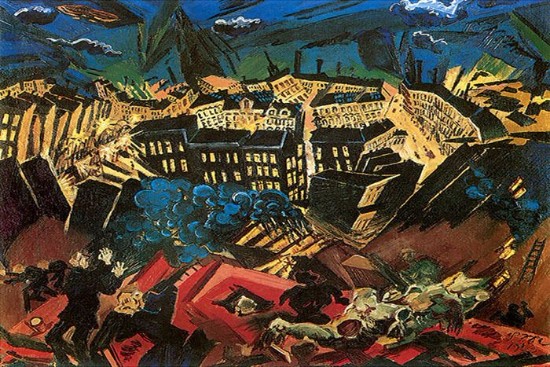
Ludwig Meidner, The Burning City, 1913. Oil on canvas, 66.5 x 78.5 cm.
Expressionists were fuelled by Nietzsche's ecstatic affirmation of life and embraced extremes of both joy and pain.
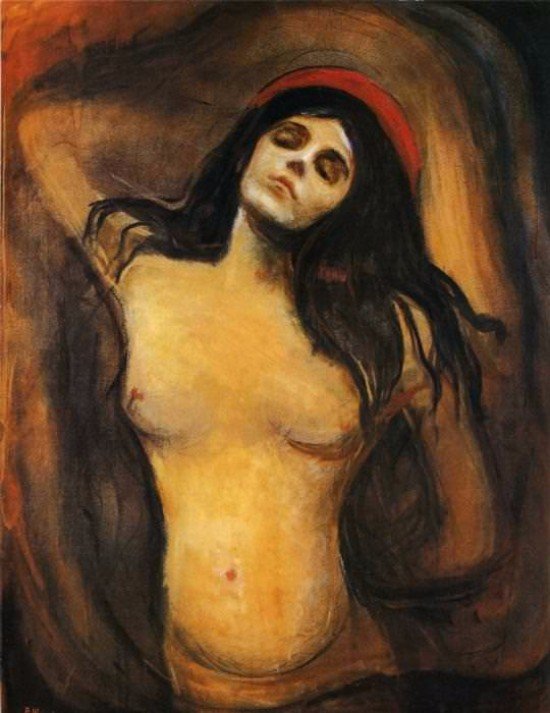
Edvard Munch, Madonna, 1893-1894. Oil on canvas, 90 x 68.5 cm.
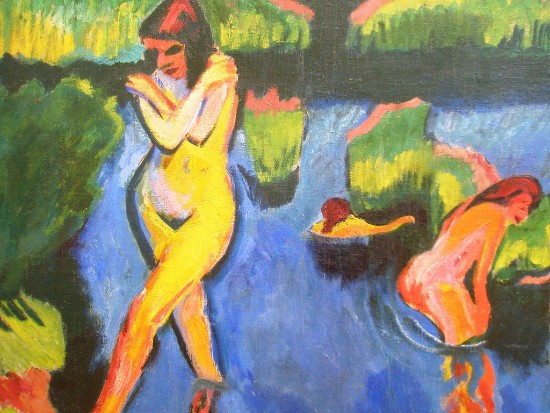
Max Pechstein, On the Banks of the Lake, 1910. Oil on canvas, 70 x 80 cm.
While at the same time damned conventional morality and even urged on rebellion.
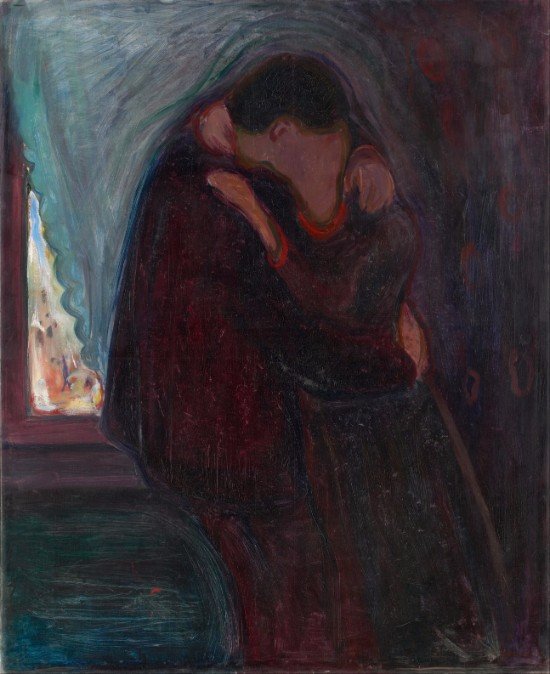
Edvard Munch, The Kiss, 1897. Oil on canvas, 92 x 65.5 cm.
%2C%201907-1908.jpg)
Gustav Klimt, The Kiss , 1907-1908. Oil, silver and gold plating on canvas, 180 x 180 cm.
Until about 1912, Expressionism was used to describe progressive art in Europe that was clearly different from Impressionism, or anything that appeared to be 'anti-Impressionist'.
%2C%201917.jpg)
George Grosz, Metropolis (View of the Metropolis), 1917.Oil on canvas, 100 x 102 cm.
But beyond geography and where the art originated, Expressionist qualities are not so much in how innovative the artists were in terms of describing the physical world.
Expressionists were more into sharing their perception and even sometimes their neurotic vision of the world.

Edvard Munch, The Scream, 1893. Oil on canvas, 91 x 73.5 cm.
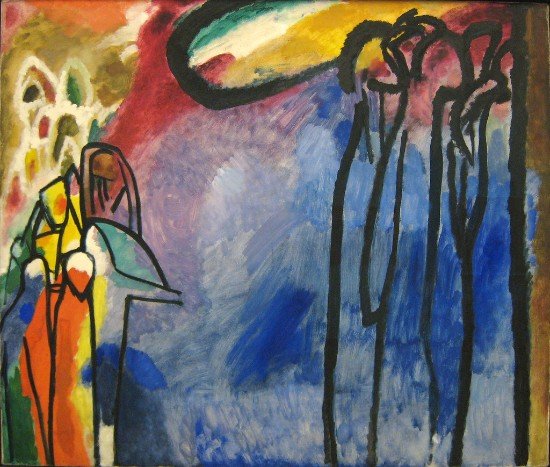
Wassily Kandinsky, Improvisation 19, 1911.Oil on canvas, 120 x 141.5 cm.
The era of German Expressionism was extinguished by the Nazi dictatorship in 1933. But its most passionate phase left a legacy that echoed on the art world ever since.
It was a period of intellectual adventure, fervent idealism, and deep desires for spiritual renewal.
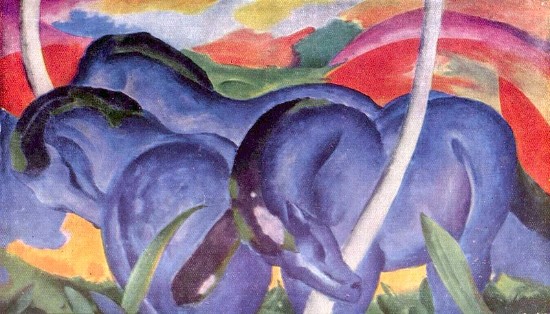
Franz Marc, Die großen blauen Pferde The Large Blue Horses, 1911. Oil on canvas, 119 x 140 cm
Follow me for more on this Modern Art series.
https://steemit.com/@achraf7b
References & Additional Resources:

Hi @
Nice share this time. I don't have many word to say some thing. I sure you are the best one on steemit.
I have latest post about health. Waiting for your coming Mr. @
Upvote and follow done.